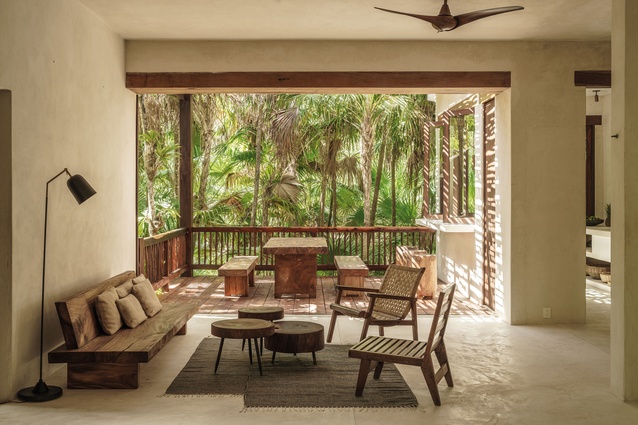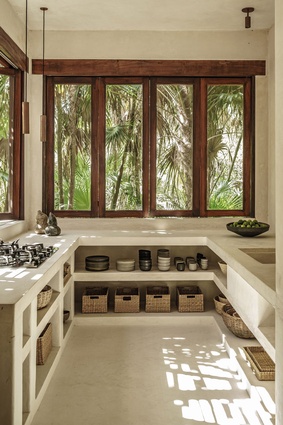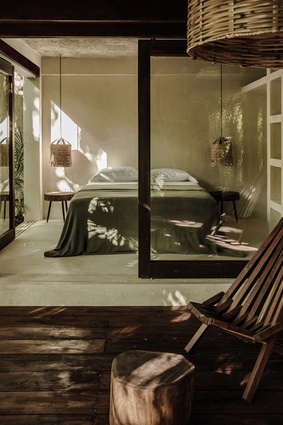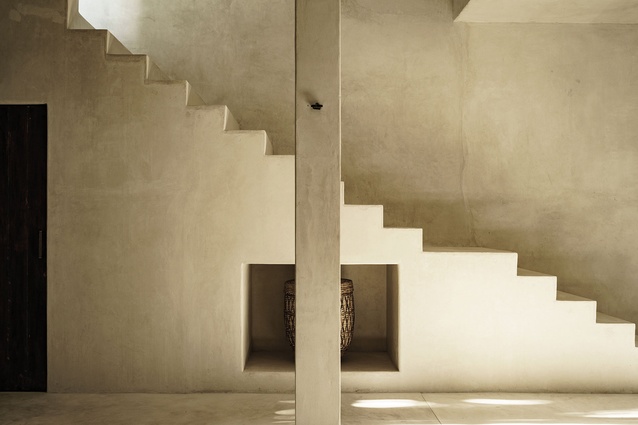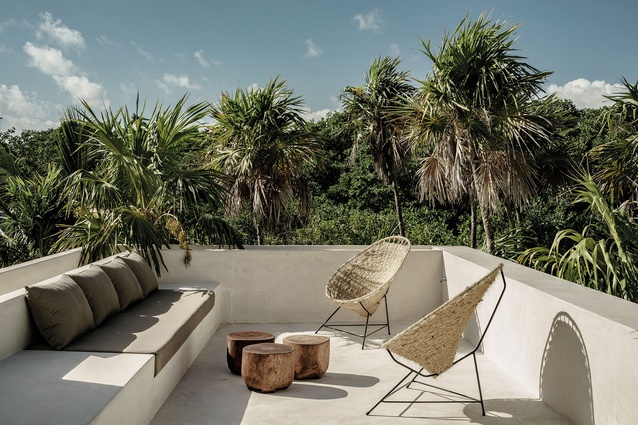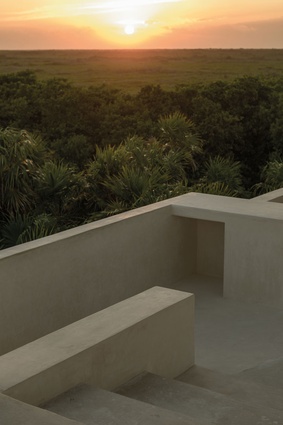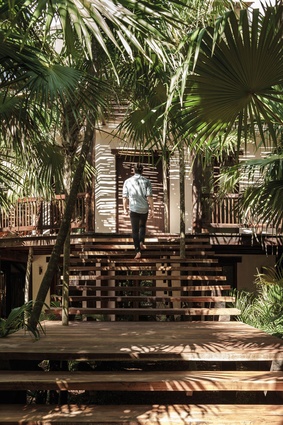Hot House: Tulum Treehouse
Contemporary flair with a distinct Caribbean soul is key to the success of this idyllic jungle house on Mexico’s Caribbean coast.
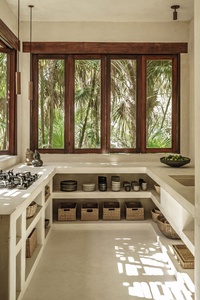
It’s nearly impossible to describe Tulum without sounding like an overenthusiastic tour guide. The small Mexican pueblo (town) is just 90 minutes south of Cancún and, in recent years, has become the Yucatán Peninsula’s newest, most popular hot spot.
Ancient Mayan ruins pepper the coastline along with luscious tropical jungles and beaches replete with pristine white sands and crystal-clear water. Little wonder tourists are flocking there in droves and new hotels and getaways are popping up everywhere.
The best developments in the area tend to work with Tulum’s natural environment and offer an experience that’s equal parts laid-back bohemia and aspirational retreat. Rather than subtract or detract from a context rich in culture and history, they add another layer of intrigue and accessibility. Yet it’s not without controversy and many people may find the commercialisation of this historically significant place offensive.
This hasn’t stopped the tourists. They keep on coming and so sustainably constructed buildings and infrastructure are necessary to prevent the area’s lucrative tourism industry from negatively impacting Tulum’s permanent residents and businesses, as well as its eco system of incredible delicacy.
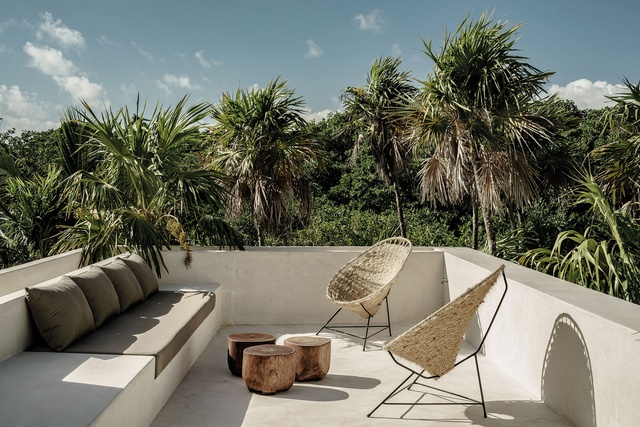
Local architecture and design practice CO-LAB’s recently completed renovation of an existing building into a private residence (available for short-term and holiday rental) has proven to be an asset to tourism and the local community. Nestled politely amongst jungle adjacent to Sian Ka’an Biosphere Reserve (a UNESCO World Heritage site), it’s completely respectful of setting but that’s not to say it’s architecturally shy or retiring.
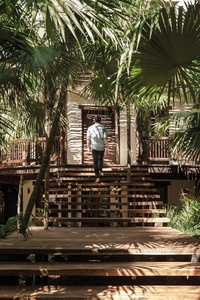
On the contrary, this three-storeyed, five-bedroomed villa, while neutral in colour, is robust in materiality and even bolder in scale and form. The objective of CO-LAB founders Joana Gomes and Joshua Beck (who have worked with renowned firms, such as MVRDV and Rem Koolhaas’ OMA) is always to deliver effective passive design outcomes via a strong connection to the outside and it is definitely at play here, as is their commitment to exquisite craftsmanship.
Generous floor-to-ceiling windows and doors characterise the polished, white concrete building and let the jungle in. Not only is the effect pleasing to look at, it also provides plentiful ventilation, essentially allowing the dwelling to cool itself.
This inside/outside theme is carried throughout and a series of private terraces and outdoor dining spaces (including an impressive 12-person dining area on the rooftop) seeks to provide guests with the ultimate immersive experience. The dense vegetation of the area has been allowed to grow close to the abode providing dappled light and shade.
Gomes and Beck used locally sourced Tzalam timber to frame the home’s generous openings, giving the overall form a greater sense of visual definition, not to mention a good dose of rustic charm. It contrasts nicely with the white, polished concrete and strong geometries of the interior and exterior walls and works to punctuate an interior that boasts large open rooms and a layout that’s rhythmic in circulation.
The dwelling can be divided into two separate zones – a two-bedroomed apartment and an upstairs three-bedroomed retreat – and rented as such with a timber deck that leads to an external staircase providing separate access to the second level.
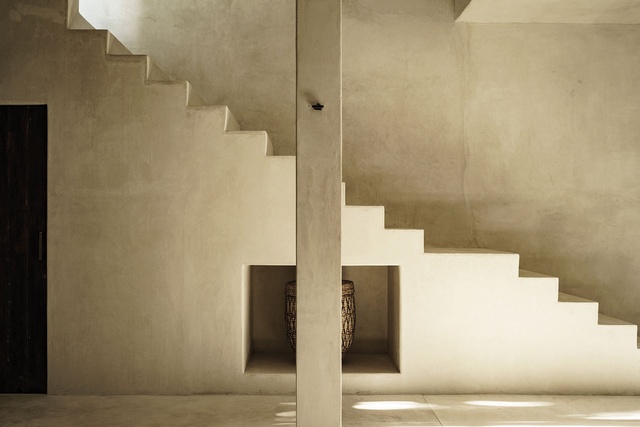
This getaway is one of many that have opened within the area in the last year or two. Another significant one is the Gaudí-inspired Treehouse suite addition to the Papaya Playa Project resort, designed by Emilio Heredia, which, like CO-LAB’s meticulously detailed home, is considerate in its attempt to ‘touch the earth lightly’. The two projects also feature collaborations with various local artisans as a major priority.
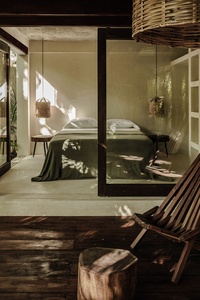
Gomes and Beck worked with Berlin-based interior designer Annabell Kutucu to deliver a distinct style that resonates with a sense of place. The project’s soft furnishings also inject narrative into the interior spaces and speak directly to the rich histories and cultures of the Mexican people.
For example, a local artisan made the woven baskets beneath the stair and in the bedrooms, using the traditional Mayan bejuco (a plant fibre) technique, while La Chicharra, an Oaxacan maker, produced the ceramic tableware that’s used in the home and a local family of carpenters custom-made the furniture from fallen trees in the Veracruz region.
Achieving a balance between soft decorative elements and hard architecture, new design outcomes and old processes, is a major success on CO-LAB’s part. However, the practice’s greatest achievement is the reworking of an existing structure into an outstanding hospitality offering, which adds value to the Yucatan Peninsula without damaging its natural resources. It’s architecture executed with careful consideration and integrity that doesn’t compromise on aesthetics, concept or functionality.

